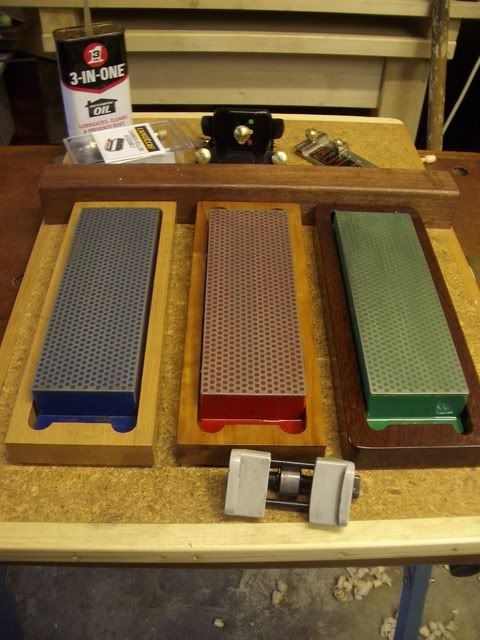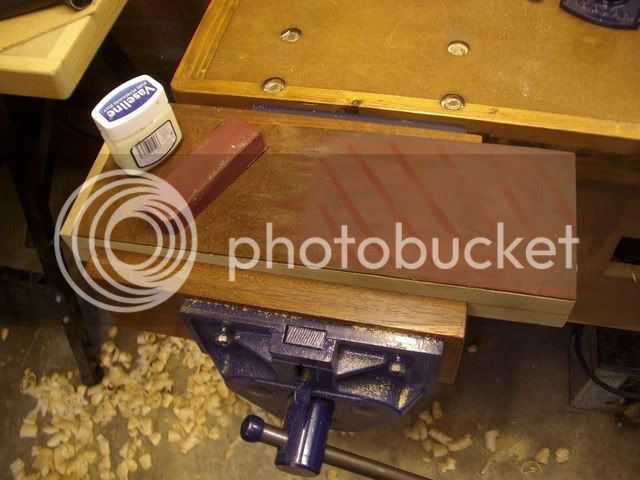Hi all
For the last few years I have been using waterstones for my sharpening - 800 & 6000 grit. The primary grind is done on a cheap grinder, which gives good results.
I am getting somewhat fed up with the mess and constant flattening required on the stones, and was considering switching to another method. DMT stones seem the most obvious choice, but which ones? And what about a polishing stone? The 10k grit Spyderco ceramic one seems a popular choice.
Ideally I would like to stick to two stones, but i'm not sure that moving from a coarse DMT to the Spyderco would give a satisfactory finish.
Any other suggestions?
Cheers
Karl
For the last few years I have been using waterstones for my sharpening - 800 & 6000 grit. The primary grind is done on a cheap grinder, which gives good results.
I am getting somewhat fed up with the mess and constant flattening required on the stones, and was considering switching to another method. DMT stones seem the most obvious choice, but which ones? And what about a polishing stone? The 10k grit Spyderco ceramic one seems a popular choice.
Ideally I would like to stick to two stones, but i'm not sure that moving from a coarse DMT to the Spyderco would give a satisfactory finish.
Any other suggestions?
Cheers
Karl


































